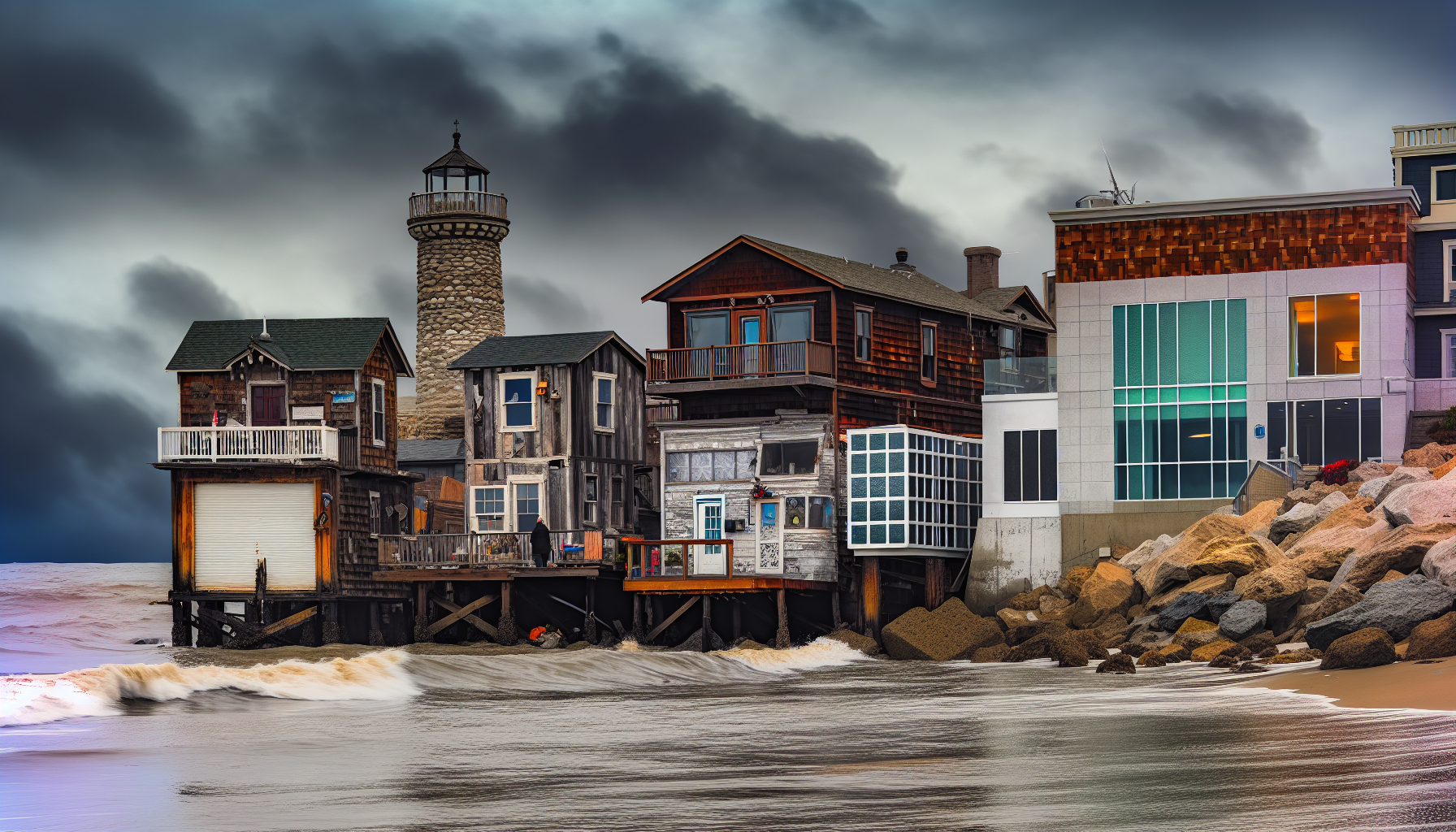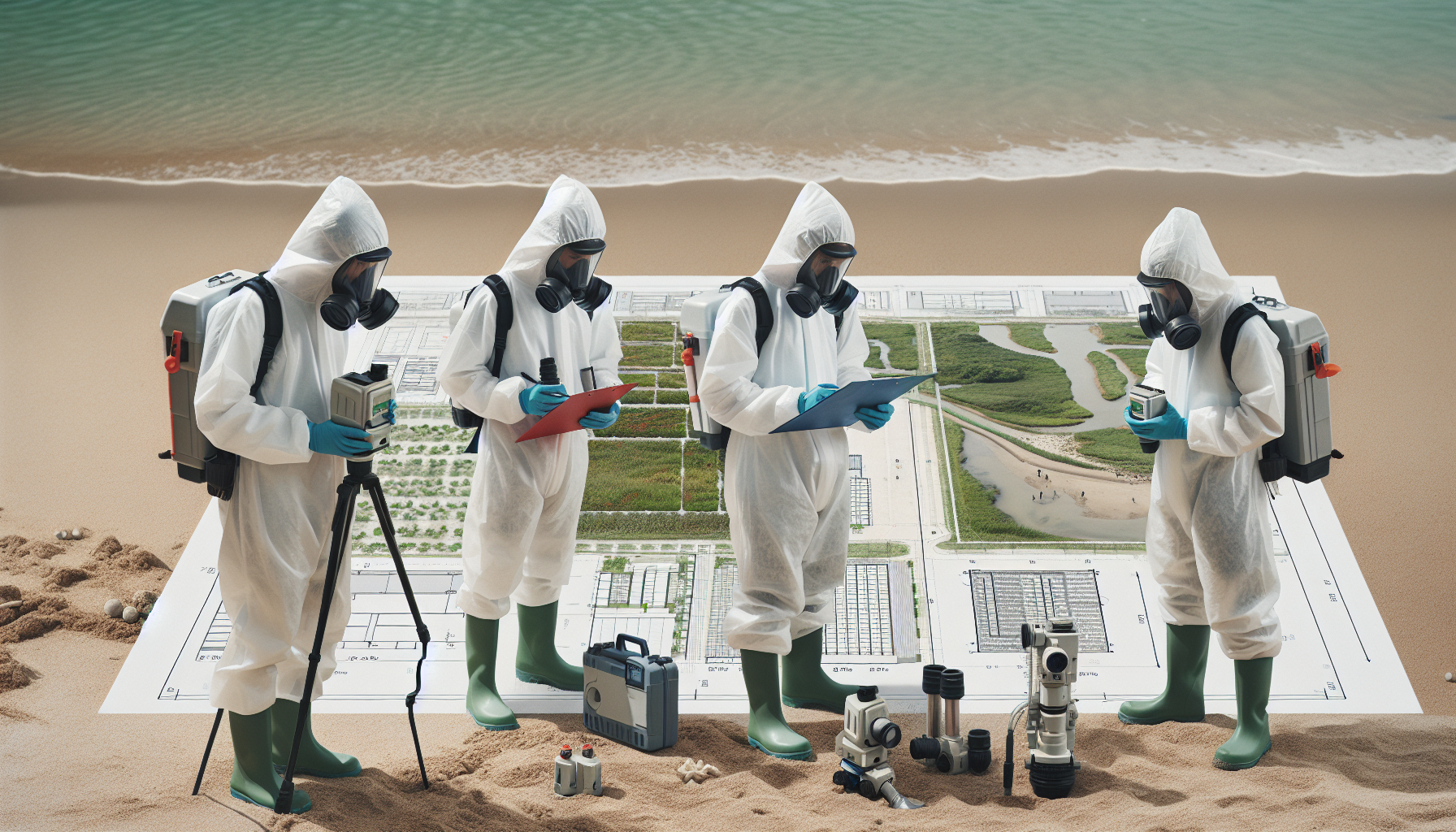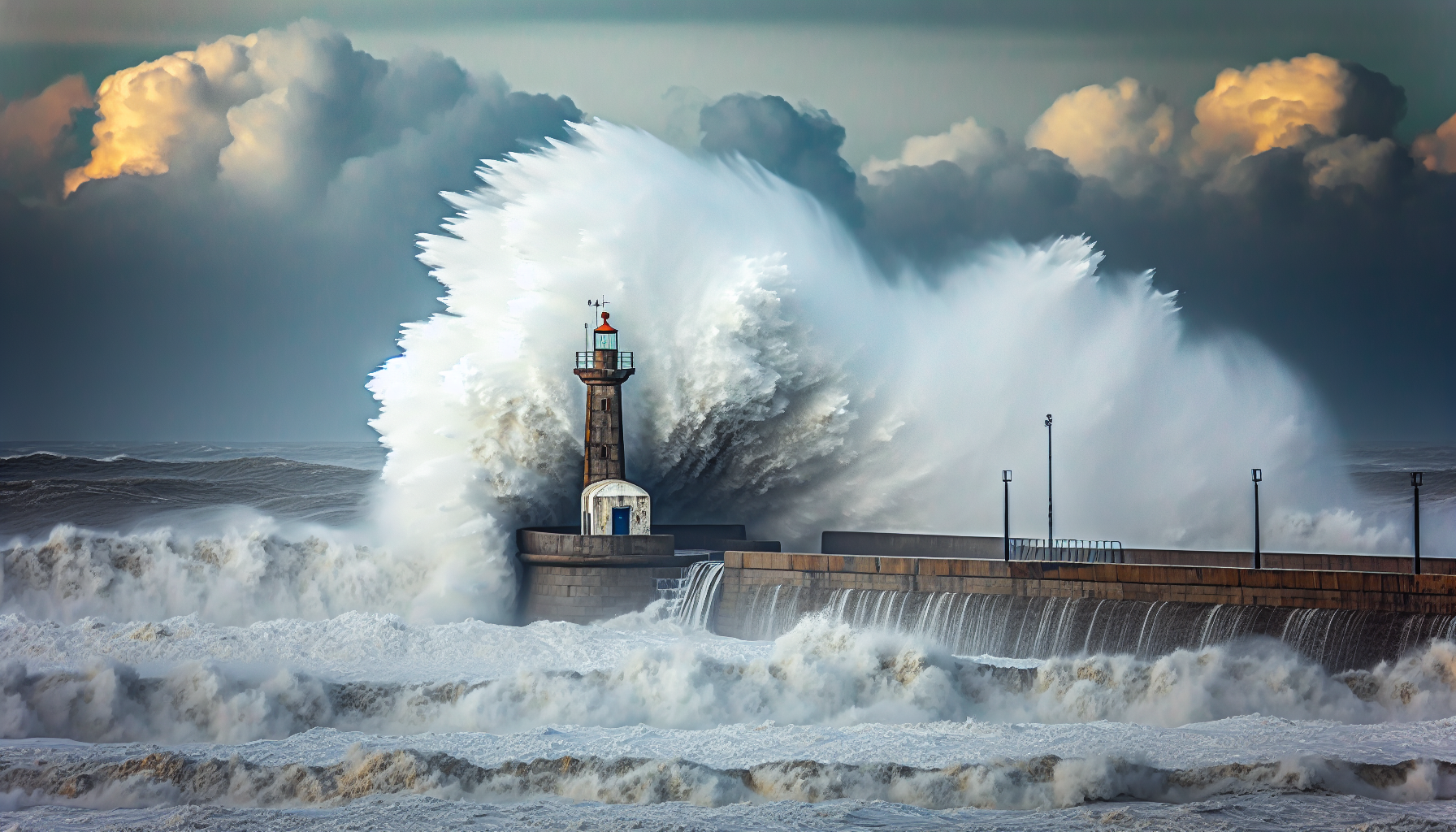[av_textblock fold_type=” fold_height=” fold_more=’Read more’ fold_less=’Read less’ fold_text_style=” fold_btn_align=” textblock_styling_align=” textblock_styling=” textblock_styling_gap=” textblock_styling_mobile=” size=” av-desktop-font-size=” av-medium-font-size=” av-small-font-size=” av-mini-font-size=” font_color=” color=” fold_overlay_color=” fold_text_color=” fold_btn_color=’theme-color’ fold_btn_bg_color=” fold_btn_font_color=” size-btn-text=” av-desktop-font-size-btn-text=” av-medium-font-size-btn-text=” av-small-font-size-btn-text=” av-mini-font-size-btn-text=” fold_timer=” z_index_fold=” id=” custom_class=” template_class=” av_uid=’av-kr59e50y’ sc_version=’1.0′ admin_preview_bg=”]
Coastal Engineering: Sustainability and Resilience for Shorelines, Navigation, Ports and Ecosystems
When you see a captivating coastal landscape, do you ever wonder about the intricate balance of natural and man-made elements that maintain its beauty? Coastal engineering, a specialized field within civil engineering, is at the heart of this balance, addressing challenges such as sea level rise, erosion, and habitat preservation, while ensuring that coastal communities, ports and other critical infrastructure thrive and are resilient to storms and flooding. Ready to dive into the intricate and fascinating world of coastal engineering? Let’s start our journey!
Key Takeaways
- Coastal engineering integrates civil engineering with oceanography to address challenges such as sea level rise, erosion, and coastal ecosystem preservation, providing services like the design of coastal structures and mitigation strategies for climate-related risks.
- Innovation in coastal engineering encompasses the development of nature-based solutions, advanced modeling techniques, and sustainable construction practices to improve the resilience of coastal areas against sea level rise, storm surges, and erosion.
- Coastal engineers balance development with environmental conservation, utilizing cost-effective nature-based solutions and environmental analysis to mitigate adverse impacts on coastal ecosystems while enhancing infrastructure durability and the management of ocean energy.
The Essentials of Coastal Engineering
At the intersection of civil engineering and oceanography, coastal engineering has a profound impact on our daily lives. It’s the art and science of designing, constructing, and managing infrastructure in coastal areas to mitigate challenges such as sea level rise, erosion, and habitat preservation. Coastal engineers grapple with the hydrodynamic impact of waves, tides, storm surges, and morphodynamic changes of coastal topography, all of which present substantial risks to human and ecosystem well-being.
The services offered by coastal engineers are as varied as the challenges they face. Some of the services provided by coastal engineers include:
- Design and rehabilitation of beaches
- Design and rehabilitation of wharves, jetties, piers, breakwaters, and access channels
- Tackling sea level rise to safeguard infrastructure, property, and individuals
A degree in coastal engineering provides the necessary knowledge and training to assist communities in addressing coastal challenges, opening doors to opportunities in state and federal agencies, as well as private surveying and design firms.
The Crucial Role of Coastal Engineers
Coastal engineers play a pivotal role in protecting and preserving our coastlines. Their work includes:
- Minimizing storm damage
- Mitigating coastal erosion
- Accommodating future sea level rise
- Analyzing shorelines and coastal topography to assess erosion risk and habitat loss
- Introducing nature-based solutions, including ecosystem restoration
- Utilizing natural features to safeguard infrastructure
- Delivering additional benefits like carbon sequestration and erosion reduction
This balance of engineering and ecology is a common emphasis for coastal engineers who are interested in softer, greener solutions to coastal engineering challenges, such as beneficial use of dredged material, living shorelines, and coastal restoration projects.
A noteworthy aspect of their work is the protection and enhancement of ecosystems. Coastal engineers incorporate ecosystem engineering species, such as seagrasses and epifaunal bivalves into their designs, which play a vital role in stabilizing sediment, reinforcing coastal defenses, and enhancing overall ecosystem resilience. Their duties span a wide range, from safeguarding shores from erosion to supervising coastal projects, performing environmental assessments, ensuring the sustainability and resilience of coastal ecosystems, and managing dredging operations.
Innovative Engineering for Coastal Challenges
Innovation is at the heart of coastal engineering. Engineers are constantly developing new strategies to address coastal challenges, such as projects that incorporate natural and nature-based features (NNBF) and the application of nature-based solutions to restore coastal ecosystems. These strategies greatly improve the sustainability and resilience of coastal areas.
Coastal engineering also leverages the latest technologies like submersibles, remotely operated vehicles (ROVs), satellites, and scuba diving equipment to carry out intricate tasks and improve the accuracy and effectiveness of coastal projects. Furthermore, they align with sustainability principles by employing renewable energy sources, utilizing sustainable materials, and exploring advanced construction methods to create ecologically responsible solutions for the long-term sustainability of coastal environments.
Advanced modeling techniques play a crucial role in this context, enabling engineers to simulate various scenarios and formulate well-informed, proactive strategies for coastal defense and sustainability.
Sea Level Rise and Coastal Structures
As sea levels rise, coastal structures face increasing threats. The global impacts may include:
- The loss of public beaches
- Erosion of shorelines
- Saltwater intrusion affecting water supplies
- Potential damage to the foundations of buildings
For accurate measurement and anticipation of sea level rise, satellites such as Jason-3, which employ radio waves and other instruments, are used. Furthermore, long-term data on changes in sea levels is obtained from tidal gauges installed in coastal areas.
In response to the growing risk of sea level rise, coastal engineers are developing adaptive strategies for coastal structures. These strategies include:
- Constructing new infrastructure
- Maintaining and restoring wetlands
- Ensuring water quality and availability
- Modeling climate risk
- Modifying land use patterns
- Monitoring operational activities
These strategies show that with the right planning and execution, the challenges posed by sea level rise can be effectively managed.
Adapting Coastal Structures to Rising Seas
Adapting to rising sea levels is a critical aspect of coastal engineering. Engineers are implementing various strategies, including:
- Constructing flood defenses
- Revising land use plans
- Employing nature-based solutions such as wetland restoration and beach nourishment
- Using physical structures like sea walls, dykes, levees, and flood barriers
These measures help to adapt to sea level rise.
Examples of effectively adapted coastal structures include the Maeslant barrier in Rotterdam, the Modulo Sperimentale Elettromeccanico in Venice, and the use of offshore breakwaters to maintain beach stability. However, adapting current structures to evolving conditions presents challenges such as increased erosion affecting the durability of structures, elevated flood vulnerabilities during storms, and the constraints of conventional construction techniques and materials in the presence of continuous water exposure. These challenges demonstrate the need for ongoing innovation in the field.
Threats to Native Ecosystems from Sea Level Rise
Sea level rise doesn’t just impact infrastructure – it also threatens native ecosystems. Effects include damage to sensitive coastal and marine ecosystems, such as flooding of wetland and seagrass areas, damage to mangroves, erosion of beaches, and loss of marshes and wetlands. It also threatens native species by reducing available ecosystems for nesting, causing widespread flooding, accelerated coastal erosion, and the loss of important habitat for critical life functions.
To protect these ecosystems, nature-based solutions are employed. These methods involve the use of coastal vegetated ecosystems and biogenic reefs, which aid in sediment binding, wave reduction, and vertical growth, effectively defending coastal areas from encroaching waters. Such innovative engineering approaches showcase the importance of ecological considerations alongside infrastructural ones.
Cost-Effective Solutions for Sea Level Challenges
Addressing the challenges of sea level rise doesn’t have to break the bank. Coastal engineers utilize cost-effective strategies such as:
- Constructing new, efficient infrastructure
- Maintaining and restoring wetlands
- Ensuring water quality and availability
- Modeling climate risks
- Modifying land use practices
- Monitoring operational activities
These strategies help to mitigate the impacts of sea level rise in a cost-effective manner.
Localized solutions, such as nature-based, grey, and policy measures, often present a more cost-effective option compared to large-scale projects. For example, the construction of barriers for large-scale projects can incur a cost ranging from $600 to $2,000 per linear foot, making the cost-effectiveness of localized measures more favorable when assessed quantitatively. Hence, implementing cost-effective solutions plays a crucial role in addressing the challenges posed by sea level rise.
Environmental Analysis in Coastal Projects
Environmental analysis is a crucial aspect of coastal engineering projects. It involves the analysis of waves, currents, sediment transport, future sea-level rise, coastal erosion, habitat mapping, and wildlife monitoring. The common environmental impacts of coastal engineering projects encompass the alteration of coastal processes, habitat loss and alteration, and disruption of sediment.
Coastal engineering strikes a balance between development and coastal environment ecosystem conservation through the implementation of:
- Nature-based solutions
- Extensive research
- Utilization of renewable energy
- Embracing natural building materials
- Incorporation of nature-based solutions into sustainable coastal development
These strategies are governed by regulations and guidelines like the National Environmental Policy Act (NEPA), which mandates federal agencies to assess the environmental impacts of their planned activities.
Assessing the Impact on Coastal Ecosystems
Coastal engineers evaluate environmental impact by conducting baseline studies to gather data on existing environmental conditions and employing tools and methodologies such as RADMAPP for data management and analysis, along with environmental monitoring, stakeholder interviews, life cycle, and cost analysis. They also evaluate potential project impacts on various environmental factors such as ecology, water resources, air quality, biodiversity, habitats, hydrological patterns, water quality, and social aspects, including socio-economic factors.
Mitigation strategies for adverse impacts on coastal ecosystems are developed through the utilization of methods such as conserving tidal wetlands, implementing nature-based solutions, and developing comprehensive land use planning strategies. These methods help to minimize the negative impacts of coastal projects on the environment and ensure a sustainable approach to coastal engineering.
Balancing Development and Conservation
Balancing development and conservation is a major challenge in coastal engineering. The fundamental principles for this balance involve:
- Integration of nature with urban development
- Reduction of environmental footprint
- Preservation of biological diversity
- Sustainable utilization of coastal resources
Methods employed to reduce environmental impact of developments include:
- Implementation of measures to mitigate harmful impacts
- Preservation of the marine environment through ecological engineering
- Enhancement of ecological community development
- Utilization of coastal bioengineering to reduce erosion
- Monitoring of operational activities
Despite these efforts, achieving a balance between development and conservation on coastlines presents significant challenges stemming from conflicting interests, environmental considerations, and regulatory intricacies.
Coastal Ecosystem Restoration
Coastal engineers play a vital role in restoring coastal ecosystems. They:
- Work to reduce wave energy and erosion
- Upkeep beaches
- Safeguard infrastructure
- Collaborate with other scientific disciplines to enhance and establish new habitats.
Innovative solutions such as nature-based designs, sustainable development practices, advanced wastewater treatment, and direct habitat restoration initiatives like coral planting and oyster reef creation are employed in coastal ecosystem restoration. Coastal engineering contributes to habitat enhancement by employing methods such as selecting suitable sediment materials, establishing eco-friendly protective structures, utilizing combinations of hard and soft engineering treatments, and creating spaces for mangroves, seagrasses, and other natural coastal habitats. This highlights the multifaceted role of coastal engineers in both infrastructure development and environmental conservation.
Managing Ocean Energy: Wave Loading and Marine Structures
Managing ocean energy is a key aspect of coastal engineering. Wave loading has the potential to result in substantial harm to marine infrastructures, with adverse effects on deck structures and the potential for complete platform or structure collapse. Coastal engineers address these risks in their design process, considering coexistence with other ocean activities and integrating technological, economic, and ecological considerations.
Modeling offshore wave climates is crucial for studying wave penetration, agitation, wave loading on structures, and other hydrodynamic parameters crucial for designing resilient maritime structures that can withstand ocean forces. Addressing these challenges requires an understanding of the ocean’s energy and a strategic approach to managing it.
Designing for Durability Against Ocean Waves
Designing structures that can withstand ocean waves is a key responsibility of coastal engineers. They:
- Select corrosion-resistant materials such as steel, concrete, stone, timber, and plastics & composites
- Focus on meticulous material selection
- Implement defense structures such as seawalls to enhance durability.
The design and structure of coastal buildings are significantly influenced by ocean waves. Shoreline stabilization structures such as seawalls, groins, and jetties are often employed to mitigate the erosive effects of waves, leading to changes in beach morphology and necessitating specific structural designs capable of withstanding the loads and pressures exerted by waves. These design considerations ensure that coastal structures are resilient against the forces of nature, protecting both people and property.
Innovations in Marine Structure Resiliency
Innovation is a key aspect of improving the resiliency of marine structures. Recent advancements involve the exploration of innovative methods to improve the resilience of coastal structures and the implementation of novel approaches to strengthen coastal and ocean adaptation. These innovations are contributing to the enhancement of coastal asset protection by minimizing economic damages from coastal hazards and restoring ecosystems, thereby sustaining opportunities for recreation and tourism through nature-based strategies.
Coastal, offshore, and deepwater structures, along with transportation terminals, wharves, piers, coastal protection works, and shipyards, have derived substantial benefits from resilience innovations. These innovations demonstrate the ongoing evolution of coastal engineering to meet the changing needs of coastal communities and ecosystems.
A Look at Coastal Engineering Expertise
Coastal engineering is a multifaceted field, with expertise spanning a wide range of disciplines. Understanding coastal processes is crucial for coastal engineers as it enables them to proficiently tackle and oversee natural and man-made alterations in coastal zones, while also contributing to coastal environmental management. Computational modeling is another critical aspect of coastal engineering, playing a crucial role in comprehending coastal processes relevant to a project and assessing the impact of alterations in the physical environment on natural features or constructed assets.
Coastal Engineering Associates, Inc. specializes in civil engineering, planning, surveying, environmental management, and construction management. The primary disciplines within the field of coastal engineering encompass the design, construction, planning, building, and management of structures along shorelines, along with the reclamation of land from the sea and the protection of shorelines.
In addition to technical skills, project management is a critical skill for coastal engineers. It ensures efficient planning, coordination, and implementation of projects related to design and construction. This encompasses the development of comprehensive project plans, delineation of tasks, timelines, and resource needs for each project phase.
Mastering Coastal Processes and Topography
Mastering coastal processes and topography is an essential skill for coastal engineers. Such understanding enables them to develop effective solutions including coast protection, land creation, and enhancement of navigation facilities. Coastal engineers employ a diverse range of methodologies, such as soft engineering techniques, strategic projects like seawalls and revetments, remote-sensing technologies, and both stability and process-based models, to study coastal processes and topography.
Topography can significantly influence the success of coastal engineering projects. It affects factors such as shoreline changes, beach erosion and recovery, and the retention of sand for beach nourishment. Therefore, understanding these influences is essential for achieving project success.
Modeling or Design? Choosing a Specialization
Coastal engineers can choose to specialize in either modeling or design, depending on their interests and career goals. Modeling encompasses the utilization of computer simulation models to evaluate impacts and offer remedies, whereas design is centered on developing plans and specifications for the construction of coastal structures and systems.
The choice of specialization can significantly impact a coastal engineer’s career. A modeling specialist spends more time studying and simulating both existing conditions and proposed scenarios to understand the effects of interactions among natural and built elements in the environment. On the other hand, a design specialist typically spends more time developing project designs and overseeing their construction.
Both specializations offer exciting opportunities to work on a wide range of projects, analyze and forecast the effects of interventions, and suggest alternative approaches to traditional engineering.
From Planning to Management: The Coastal Engineer’s Journey
The journey of a coastal engineer spans from planning to management. In the planning phase, engineers produce engineering designs for shoreline protection and restoration projects, stormwater mitigation, groins, jetties, breakwaters, and other waterfront improvements. They also conduct site reviews, construction site visits, and coordinate all aspects of Construction Administration.
The design process in coastal engineering projects typically entails conducting a comprehensive study to comprehend the physical system and shoreline response, followed by detailed project design that takes into account technical, environmental, and social aspects. Coastal engineers oversee the execution and upkeep of coastal projects by coordinating and overseeing the allocation of resources, personnel, and contractors, while maintaining a focus on quality and safety.
Despite the challenges, coastal engineers continue to play a vital role in sustaining our coasts and shaping our future.
Summary
From understanding the intricacies of coastal processes to designing resilient structures that stand up to the forces of nature, coastal engineers are at the forefront of protecting our coastlines. As the seas continue to rise, their work becomes increasingly vital. But with their innovative solutions, deep understanding of the coastal environment, and commitment to sustainability, we can be confident that they will continue to rise to the challenge, safeguarding our coastal communities and ecosystems for generations to come.
Frequently Asked Questions
Is coastal engineering hard?
Yes, coastal engineering can be challenging due to the impact of waves, tides, storm surges, and the harsh coastal environment. These factors present typical challenges for coastal engineers.
Are coastal engineers in demand?
Yes, the career field is in high demand due to increasesstricter environmental regulations, increased variability in coastal conditions caused by climate change, and an ongoing emphasis on modernizing infrastructure. The field has grown rapidly in the 2000-2023 time period and is increasing in demand as the risks associated with sea level rise, tropical storm events, coastal flooding and coastal stormwater management become topics of national concern.
Why do we need coastal engineers?
Coastal engineers are needed to develop solutions that help prevent or reduce the risk of land loss due to erosion from storms, waves, and currents, saving property owners and investors from significant monetary losses.
What is the significance of understanding coastal processes for coastal engineers?
Understanding coastal processes is crucial for coastal engineers as it allows them to effectively manage natural and human-induced changes in coastal areas and contribute to coastal environmental management.
What is the impact of topography on the success of coastal engineering projects?
Understanding the influence of coastal topography and bathymetry on factors like shoreline changes and beach erosion is crucial for the success of coastal engineering projects. Landform below and above the waterline impacts sediment transport, hydrodynamics, wave energy and many other aspects influencing design of projects and the likelihood of successful outcomes.
[/av_textblock]





